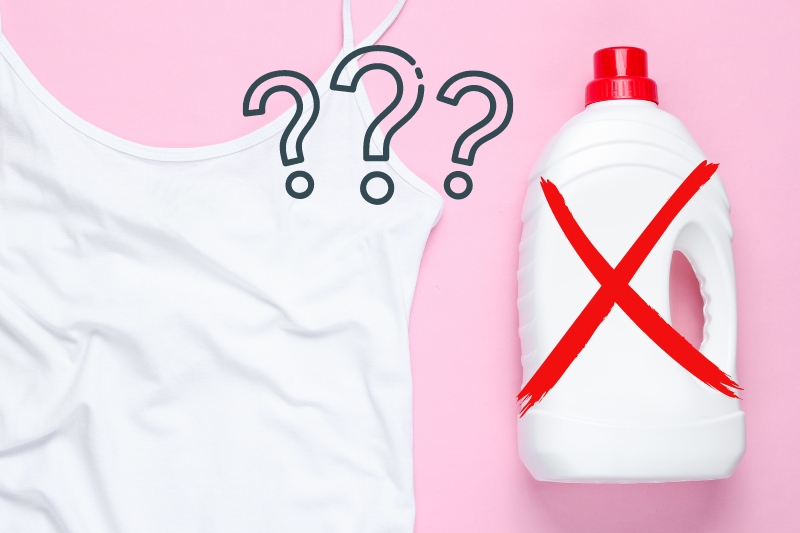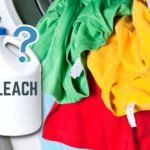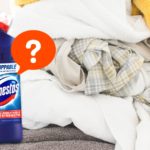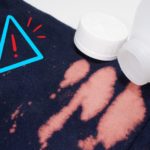Sometimes, the usual wash isn’t enough. If clothes have been through an especially bad time, then they may be crying out for a clean that gets rid not just of dirt but of bacteria too.
You may be dealing with clothes that were worn by somebody suffering from an infectious ailment like E. coli or salmonella, both of which can stay on unwashed clothes for weeks.
Bleach is often the first resort in these situations, but it’s not suitable for every scenario, especially if you’re talking about chlorine bleach.
For instance, you might be dealing with coloured or dark clothes, which bleach would attack and fade. Or you might just not want to use something as all-round damaging and polluting as bleach.
Thankfully, there are a number of other options you can apply. Let’s check them out.
1. Heat
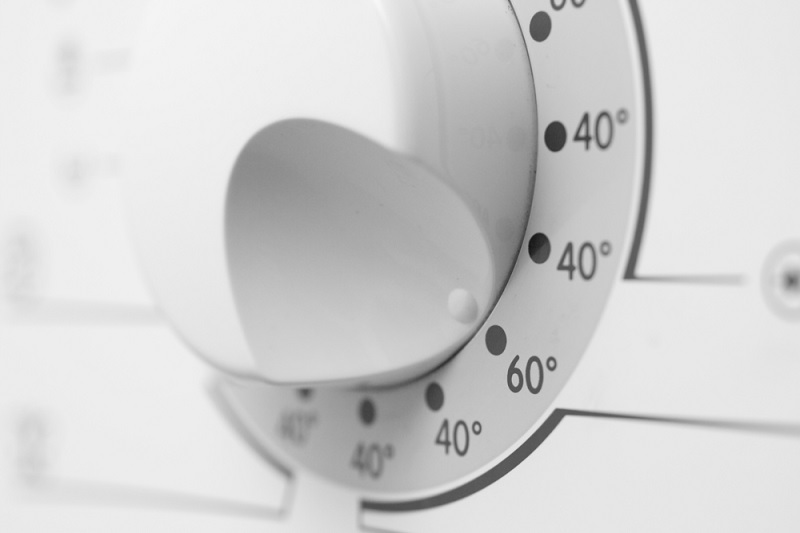
Most washes are carried out at between 30°C and 40°C which, although usually a good enough temperature to eradicate stains, won’t be hot enough to banish germs.
So, if you’re planning on administering a dose of bacteria-busting heat, you’ll need to crank up the temperature to at least 60°C (do note that some machines have a specific disinfecting cycle).
Follow this with a blast in the tumble dryer and those germs won’t know what’s hit them.
Of course, this route is all very good if your clothes can cope with such a sauna session. Not many of them can though.
There are also other considerations: it’s not cheap to heap on the heat, and it’s not friendly to the environment either. So, let’s look at some other options.
2. White Vinegar
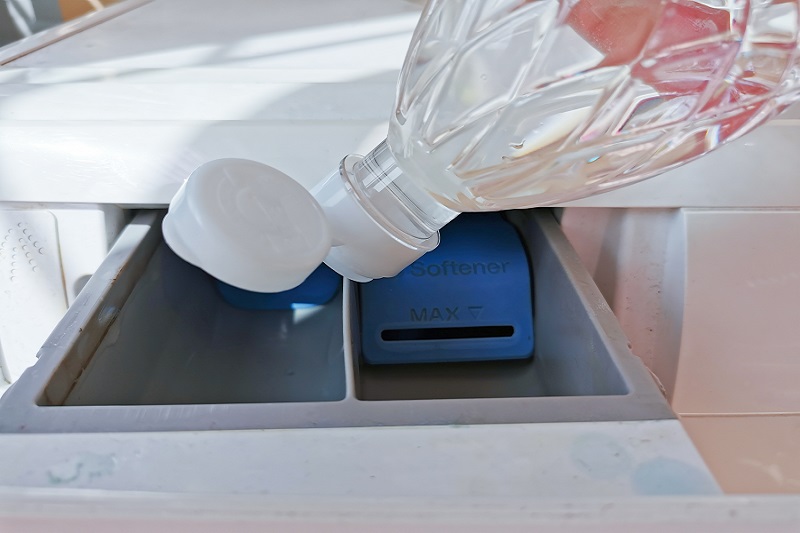
The household hero that we call white vinegar can do most things, so it probably won’t surprise you to learn that it can be used to disinfect laundry.
E. coli and salmonella will succumb to its disinfecting power, along with some other bacteria. However, vinegar won’t kill all germs, so its uses are limited.
Add half a cup of it along with your detergent and its acetic acid will go to work on eliminating some of the common germs that can accumulate on dirty laundry.
It delivers other laundry benefits too: it whitens whites, deodorises and softens. So, all in all, a washday wonder.
3. Pine Oil
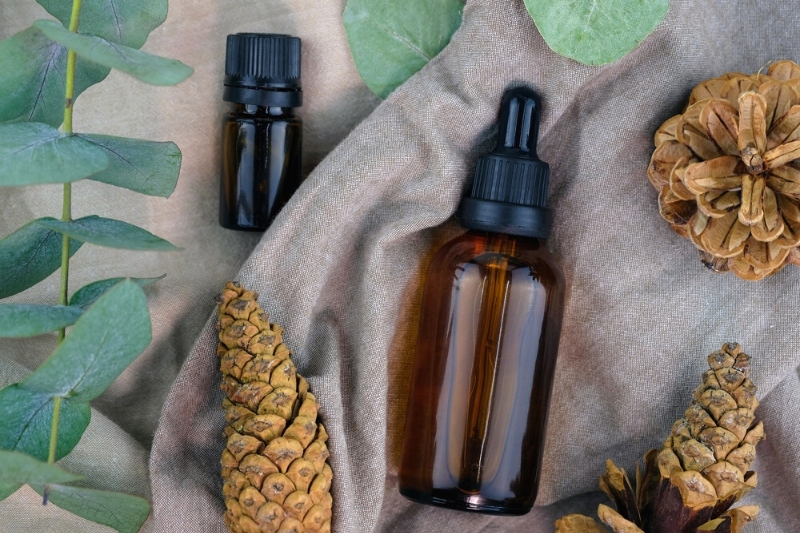
Pine oil is a great all-natural option when added to the washing machine, gently disinfecting your clothes in a non-harmful manner.
Note: for decent disinfecting action, you need to be using a concentration of 80% or more.
Watch out for delicates though, as it can damage material like silk. Also, there might be a residual whiff of pine after the wash.
So, if you don’t want your family to go around smelling like freshly cleaned toilets, apply an extra rinse.
4. Essential Oils
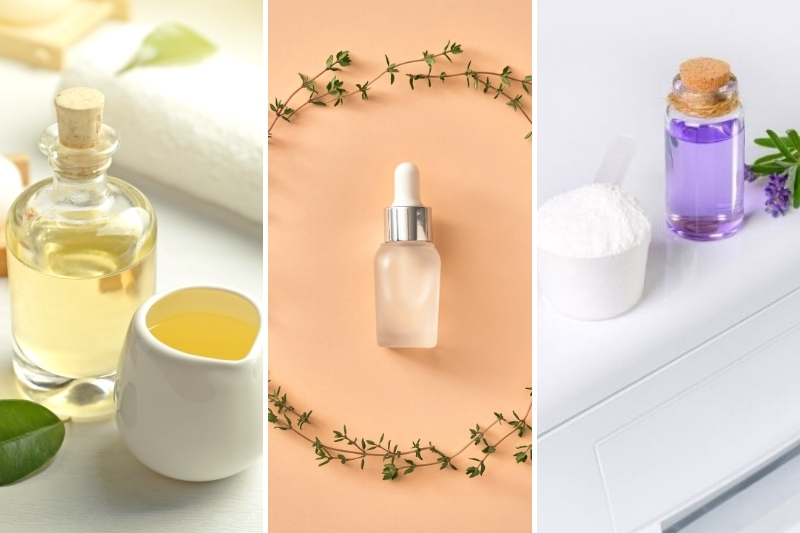
Some essential oils are excellent germ-busters. Tea tree oil’s one of them.
Used in 100% concentration, this little marvel has marvellous anti-bacterial and anti-fungal characteristics.
Being powerful stuff, you need no more than a teaspoon in the washing machine for it to work its magic. Try also lavender and thyme oils.
5. Sunlight
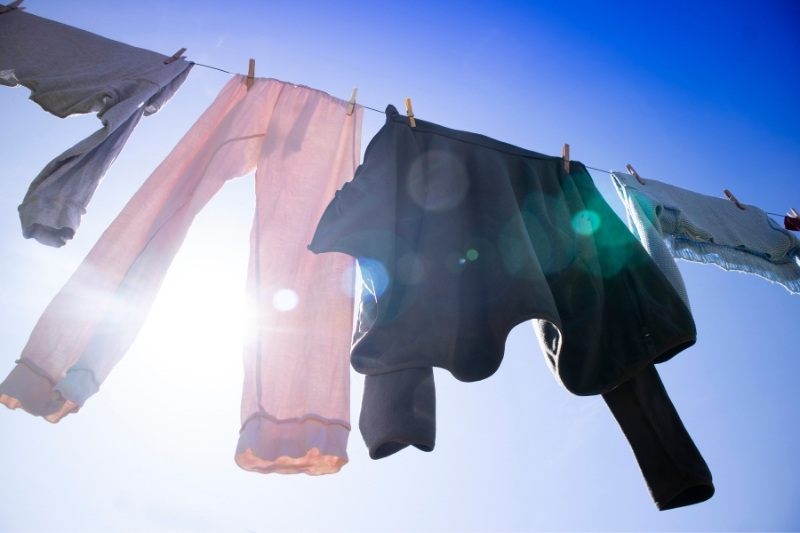
Once your wash has finished and it’s time to dry that load, it’s well worth getting it outside.
Not only does outdoor drying give you great smelling laundry and lower energy bills, it also subjects it to the disinfecting power of the sun.
An hour in strong sunshine will get rid of a vast number of germs, courtesy of ultra-violet radiation. Be careful not to leave coloureds out there too long though, as discolouration can occur.
6. Antibacterial Laundry Cleanser
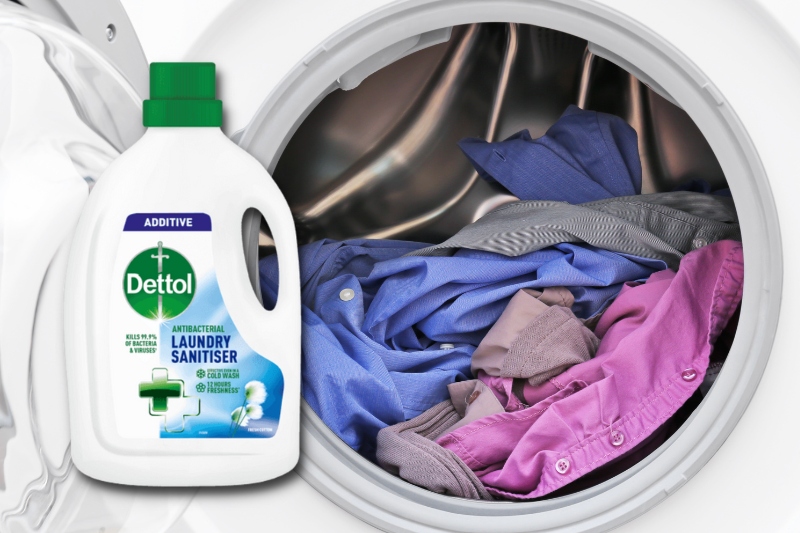
Laundry cleansers are designed to be added to your washing machine alongside your regular detergent. They can kill germs even when washing at low temperatures.
Examples include Dettol’s Antibacterial Laundry Cleanser, which reviewers praise for its gentleness and power.
Tips for Reducing Bacteria
Prevention’s better than cure, so it’s worth taking a look at a few ways you can keep bacteria at bay in the first place.
Clean your machine
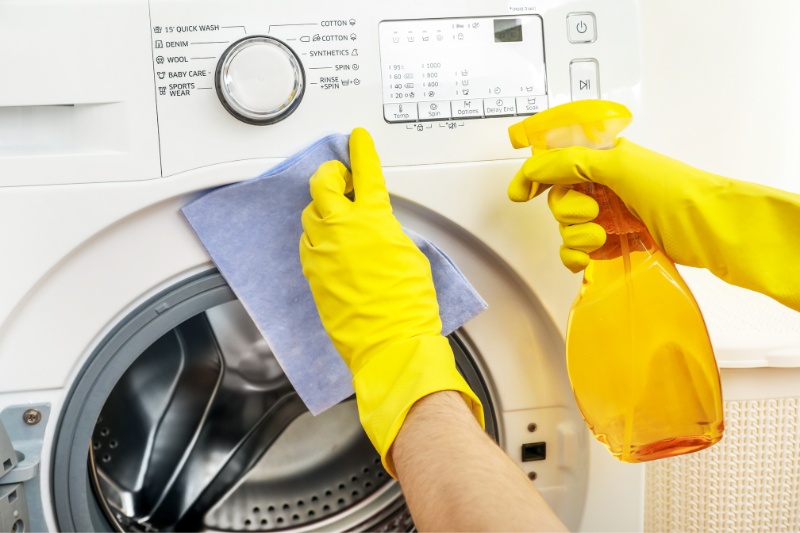
After all that bacteria-bashing, washing machines can be a nice cosy home for any surviving germs, so you need to get in there sometimes and oust those interlopers.
Some machines make this easy by having a Drum Clean function. This basically subjects the drum to a serious dousing with piping hot water, all the better to see off those unwanted molecular miscreants.
If your machine has no such function, you can follow this (admittedly quite laborious) routine. Add two cups of hydrogen peroxide to the machine and do a hot wash.
Then add one cup of bicarbonate of soda (baking soda) and put it through another wash cycle. Then spray vinegar around the lid and rubber areas, before giving the whole interior a wiping down.
Phew! OK, it may take some time, but you’ll end up with a washing machine you could eat your dinner out of.
Note: In The Wash does not condone the eating of dinner or any other meal from the inside of a washing machine!
Wash your hands
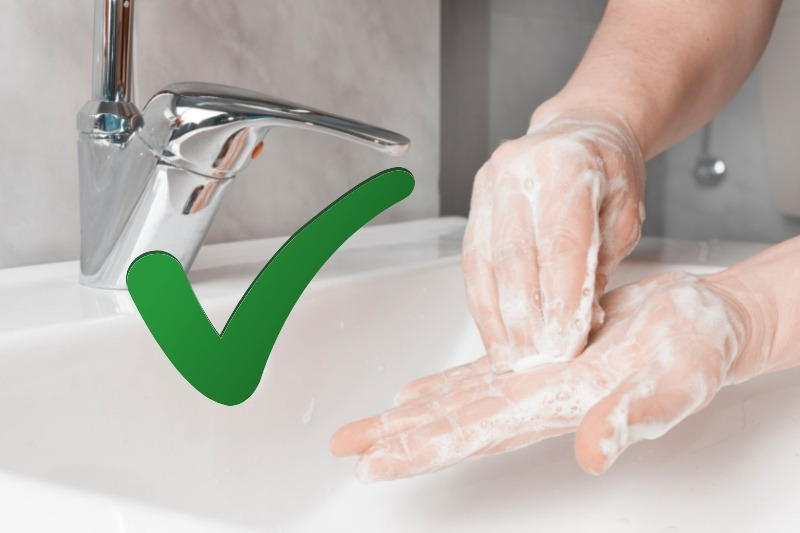
Bit simpler, this one. After you’ve touched any dirty laundry, give your hands a wash, either with anti-bacterial handwash or give them an extended hot water and soap cleanse.
It’ll stop you spreading germs to other spots around the house, including, of course, the washing machine controls, from where germs can mount a renewed assault on the clean clothes you remove from the machine at the end of the wash.
Keep towels separate

Towels tend to give refuge to an especially large concentration of bacteria because of the bodily secretions that end up on them and the amount of time they spend damp.
For this reason, it’s a good idea to have a separate towel laundry bin if possible.
Sanitise your laundry bin
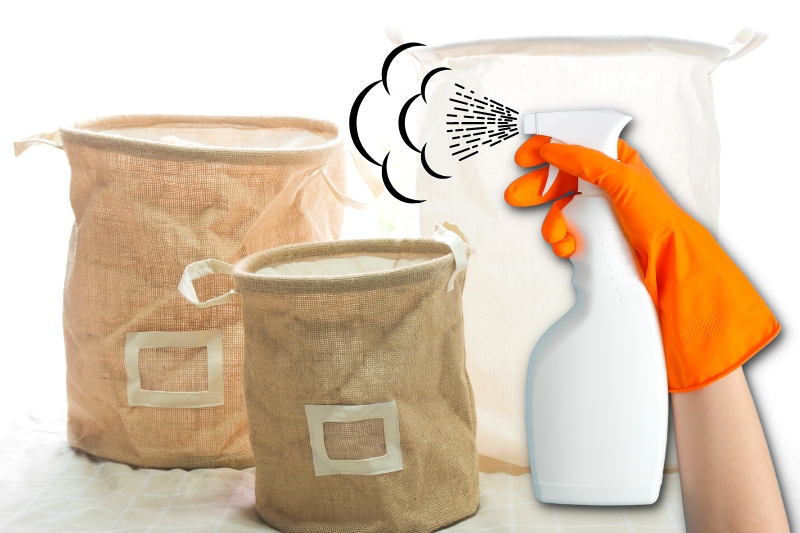
Finally, it makes sense to go to where those dirty clothes spend time in cahoots, nurturing bacteria like it’s going out of fashion.
Periodically empty out that laundry bin (or hamper, as some call it) and give it a spray with disinfectant spray. Then leave it outside to dry. Your clothes will be so grateful.
Disinfecting Without Damage
It’s good to know that you don’t need to whack bacteria with strong chemicals in order to adequately disinfect your clothing.
There are very effective natural alternatives that you can apply to keep those germs in check.
At this point we must administer a caveat, though.
Good though these options are, they can’t officially be called disinfectants. British standards dictate that 99.999% of all bacteria must be killed within five minutes of application for a product to earn that title, and most of the substances we’ve discussed fall short of this.
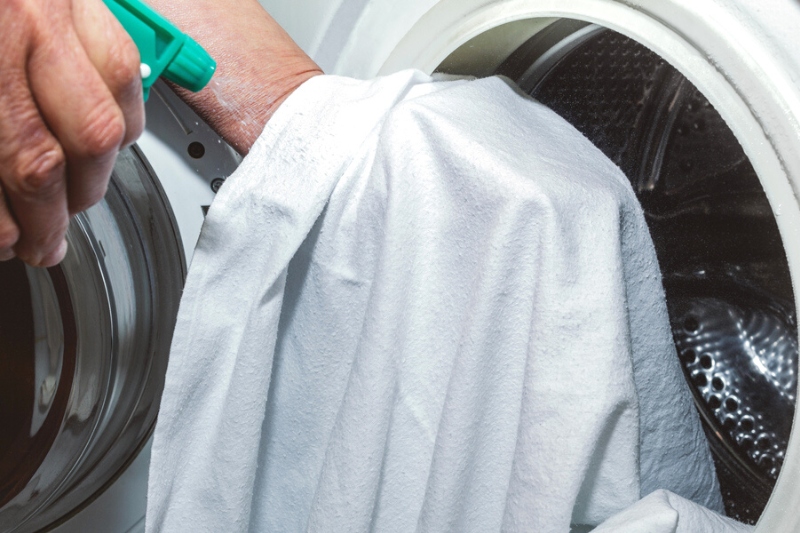
So, if we’re being sticklers, we’d have to say that only bleach and proprietary disinfectant totally disinfect.
However, as far as most of the common bacterial threats to health are concerned, it’s not really necessary to be quite as all-destroying as bleach is.
Vinegar in particular is widely praised for its efficacy against the major risks, from salmonella to tuberculosis.
So, next time you need to give germs the heave-ho from your clothes, consider using one of these gentle and effective methods. They’re kinder to the environment and a lot kinder to your clothes. And kindness is king.

Martin’s life revolves around films, dogs and food, but rarely all at the same time. At least two out of these three like to give clothes and furniture a hard time, and Martin enjoys discovering and writing about new ways to stop them doing their worst.
